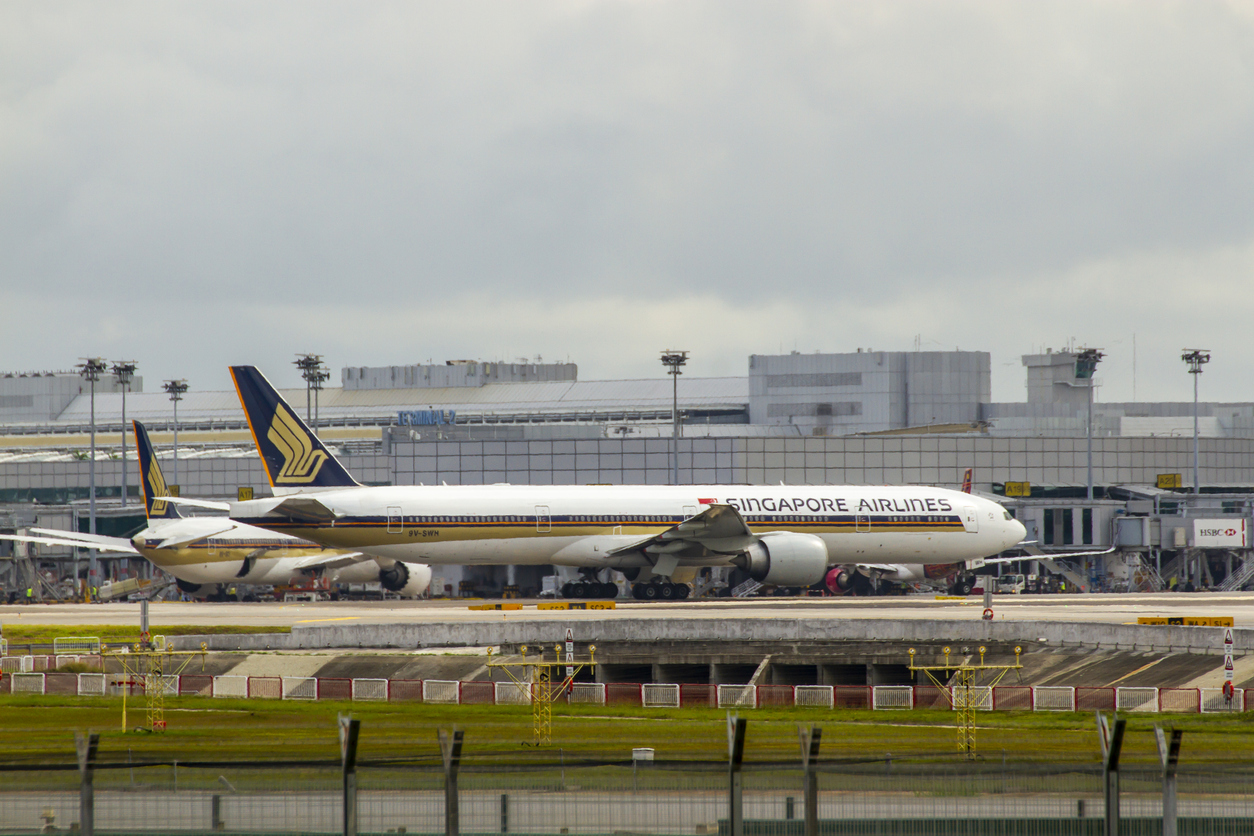Last week, a Singapore Airlines flight traveling from London to Singapore tragically resulted in one fatality and dozens of injuries after encountering severe turbulence over Myanmar. Singapore Airlines flight SQ321, a Boeing 777-300ER, was roughly halfway through its journey when the incident occurred.
Turbulence Strikes Mid-Flight
The incident unfolded around 2:19 pm local time on May 21st (07:49 UTC). According to data retrieved from the aircraft’s flight recorders, the plane experienced a rapid change in altitude, a telltale sign of sudden turbulence. Weather reports indicate thunderstorms, some severe, were present in the area at the time.
Join us on TELEGRAM for the Latest Aviation Updates fresh to your phone.

The sudden jolt caused the aircraft’s vertical acceleration to fluctuate dramatically within a short timeframe. Investigators from Singapore’s Transport Safety Investigation Bureau (TSIB) believe this rapid shift likely caused unbelted passengers and objects to be thrown around the cabin.
Emergency Diversion and Medical Response
Following the turbulence event, the pilots were able to regain control of the aircraft and made the decision to divert to Bangkok. Flight SQ321 landed safely at Suvarnabhumi Airport in Bangkok at 3:15 pm local time (08:45 UTC) where emergency medical personnel were waiting.
One Dead, Dozens Injured
Sadly, one passenger did not survive the turbulence. Dozens more were injured, with some reported to be in critical condition. Singapore Airlines has not yet released the identity of the deceased passenger.
Investigation Underway
Singapore’s Transport Safety Investigation Bureau TSIB is currently conducting a full investigation into the incident. The agency has already completed its analysis of the flight data recorder, revealing the dramatic changes in altitude and airspeed experienced by the aircraft.
Investigators found that the aircraft experienced an uncommanded increase in altitude and “an uncommanded increase in airspeed which [the pilots] arrested by extending the speed brakes.”
Further, “At 07:49:40 hr, the aircraft experienced a rapid change in G as recorded vertical acceleration decreased from +ve 1.35G to negative (-ve) 1.5G, within 0.6 sec. This likely resulted in the occupants who were not belted up to become airborne.”
One second later, “the vertical acceleration changed from -ve 1.5G to +ve 1.5G within 4 sec. This likely resulted in the occupants who were airborne to fall back down.”
The aircraft’s altitude was restabilized at 37,000 ft at 07:50:23.
The investigation will focus on determining the cause of the turbulence and evaluating the crew’s response to the situation.
This incident serves as a stark reminder of the dangers of inflight turbulence. While rare, severe turbulence can have devastating consequences. Passengers are always advised to adhere to crew instructions and remain securely fastened in their seats whenever the seatbelt sign is illuminated.
Keep an eye on our social media as this story develops, for further updates.
Sources:
- flightradar24
- Featured image by HuyNguyenSG | iStock
Youssef Yahya is the CEO and Founder of Aviation for Aviators. He also serves as the Chief-in-Editor of the platform’s website, where he shares his passion for aviation and provides valuable resources for aviation enthusiasts and professionals alike. His love for aviation and entrepreneurial spirit drive him to create innovative solutions, making Aviation for Aviators a unique resource in the aviation sector.
You might also like:
- FAA Cracks Down on Unruly Passengers
- Configuration: Tail design (V-Tail)
- Essential tips for safe flying with kids
- Why are low cost airlines such big money makers?
- Which private jet is the best to travel in?
Discover more from Aviation for Aviators
Subscribe to get the latest posts sent to your email.

